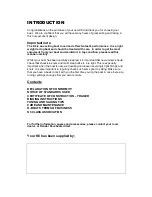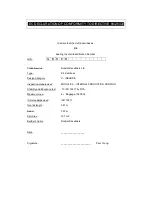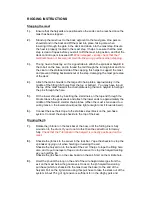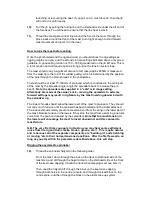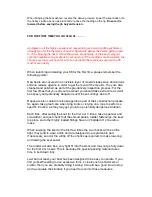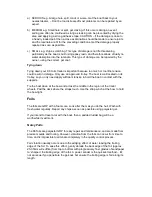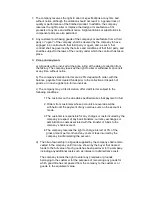
TUNING AND SAILING TIPS
Keel
The keel should be left fully down whilst sailing. Only lift the keel for launch and
recovery, or in the event of grounding.
Tack Downhaul
Increasing the tension progressively bends the mast, flattens the sail and opens the
leech. In lighter airs keep it fairly slack and progressively increase the tension up the
wind range. Extreme tension should blade the upper leech out flat in very strong
conditions.
Kicker
The more wind there is, the more kicker you need. It powers up the leech helping
pointing upwind and maintaining power on the reaches. In very gusty conditions,
easing it will make the rig more forgiving. Ease it substantially down wind, prior to
bearing away.
Disconnect the kicker prior to lifting the keel and vice versa.
Jib sheeting
To tighten the jib leech, attach the jib sheet to the top hole on the jib clew board and
vice versa.
The jib sheeting width can be adjusted using the barber hauler on the traveller, which
is lead back to the centre console. Ease the barber hauler progressively in medium to
strong breeze and ease it fully for close reaching.
Tacking
The self tacking jib can be left cleated, but for best speed out of the tack ease the
sheet about 150mm as you go through the tack and then tighten it again when the
boat has accelerated on the new tack.
Spinnaker hoist
The spinnaker halyard is led so that either the helm or the crew can hoist and drop
the sail.
First, ensure the spinnaker sheets are not cleated. Bear the boat away on to a run
(this is not necessary in very light winds). The crew should pull the pole out first, or
simultaneously with the helm hoisting the spinnaker. Do not sail for long with the pole
out prior to hoisting. The sail could catch in the water and drag the whole sail out of
the chute and under the boat.
Gybing
Always gybe with the boat sailing as fast as possible. In breezy conditions the
helmsman should steer back into the gybe as the boom comes across, so that the
boat is travelling straight downwind as the sails fill on the new side.
Spinnaker drop
Bear away onto a run (again, this is not necessary in light winds). The crew should
release the pole outhaul and the spinnaker halyard. The crew or the helmsman can
then drop the sail. As the sail is pulled into the chute, the bowsprit will automatically
be pulled back into the boat.


